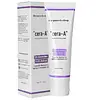What's inside
What's inside
 Key Ingredients
Key Ingredients

 Benefits
Benefits

 Concerns
Concerns

No concerns
 Ingredients Side-by-side
Ingredients Side-by-side

Water
Skin ConditioningGlycerin
HumectantTranexamic Acid
AstringentAlpha-Arbutin
AntioxidantButylene Glycol
HumectantAcetamidoethoxyethanol
HumectantChamomilla Recutita Flower Extract
MaskingPanthenol
Skin ConditioningAmmonium Acryloyldimethyltaurate/Vp Copolymer
Phenoxyethanol
PreservativeSodium Acrylates Copolymer
Lecithin
EmollientLysine
Skin ConditioningHistidine
HumectantArginine
MaskingAspartic Acid
MaskingThreonine
Serine
MaskingGlutamic Acid
HumectantProline
Skin ConditioningGlycine
BufferingAlanine
MaskingValine
MaskingIsoleucine
Skin ConditioningLeucine
Skin ConditioningTyrosine
MaskingPhenylalanine
MaskingEthylhexylglycerin
Skin ConditioningMenthyl Lactate
MaskingPPG-26-Buteth-26
Skin ConditioningPEG-40 Hydrogenated Castor Oil
EmulsifyingWater, Glycerin, Tranexamic Acid, Alpha-Arbutin, Butylene Glycol, Acetamidoethoxyethanol, Chamomilla Recutita Flower Extract, Panthenol, Ammonium Acryloyldimethyltaurate/Vp Copolymer, Phenoxyethanol, Sodium Acrylates Copolymer, Lecithin, Lysine, Histidine, Arginine, Aspartic Acid, Threonine, Serine, Glutamic Acid, Proline, Glycine, Alanine, Valine, Isoleucine, Leucine, Tyrosine, Phenylalanine, Ethylhexylglycerin, Menthyl Lactate, PPG-26-Buteth-26, PEG-40 Hydrogenated Castor Oil
Water
Skin ConditioningTriethylhexanoin
MaskingHyaluronic Acid
HumectantSodium Hyaluronate
HumectantGlycerin
HumectantPropylene Glycol
HumectantPanthenol
Skin ConditioningSaccharide Isomerate
HumectantCarbomer
Emulsion StabilisingTriethanolamine
BufferingPhenoxyethanol
PreservativeMoringa Oleifera Seed Oil
EmollientLimnanthes Alba Seed Oil
Skin ConditioningMacadamia Integrifolia Seed Oil
Skin ConditioningCeramide NP
Skin ConditioningPhytosphingosine
Skin ConditioningHydrogenated Lecithin
EmulsifyingPoloxamer 235
EmulsifyingRetinol
Skin ConditioningEpigallocatechin Gallate
AntioxidantAllantoin
Skin ConditioningAloe Barbadensis Leaf Juice
Skin ConditioningXanthan Gum
EmulsifyingEthylhexylglycerin
Skin ConditioningWater, Triethylhexanoin, Hyaluronic Acid, Sodium Hyaluronate, Glycerin, Propylene Glycol, Panthenol, Saccharide Isomerate, Carbomer, Triethanolamine, Phenoxyethanol, Moringa Oleifera Seed Oil, Limnanthes Alba Seed Oil, Macadamia Integrifolia Seed Oil, Ceramide NP, Phytosphingosine, Hydrogenated Lecithin, Poloxamer 235, Retinol, Epigallocatechin Gallate, Allantoin, Aloe Barbadensis Leaf Juice, Xanthan Gum, Ethylhexylglycerin
 Reviews
Reviews

Ingredients Explained
These ingredients are found in both products.
Ingredients higher up in an ingredient list are typically present in a larger amount.
Ethylhexylglycerin (we can't pronounce this either) is commonly used as a preservative and skin softener. It is derived from glyceryl.
You might see Ethylhexylglycerin often paired with other preservatives such as phenoxyethanol. Ethylhexylglycerin has been found to increase the effectiveness of these other preservatives.
Glycerin is already naturally found in your skin. It helps moisturize and protect your skin.
A study from 2016 found glycerin to be more effective as a humectant than AHAs and hyaluronic acid.
As a humectant, it helps the skin stay hydrated by pulling moisture to your skin. The low molecular weight of glycerin allows it to pull moisture into the deeper layers of your skin.
Hydrated skin improves your skin barrier; Your skin barrier helps protect against irritants and bacteria.
Glycerin has also been found to have antimicrobial and antiviral properties. Due to these properties, glycerin is often used in wound and burn treatments.
In cosmetics, glycerin is usually derived from plants such as soybean or palm. However, it can also be sourced from animals, such as tallow or animal fat.
This ingredient is organic, colorless, odorless, and non-toxic.
Glycerin is the name for this ingredient in American English. British English uses Glycerol/Glycerine.
Learn more about GlycerinPanthenol is a common ingredient that helps hydrate and soothe the skin. It is found naturally in our skin and hair.
There are two forms of panthenol: D and L.
D-panthenol is also known as dexpanthenol. Most cosmetics use dexpanthenol or a mixture of D and L-panthenol.
Panthenol is famous due to its ability to go deeper into the skin's layers. Using this ingredient has numerous pros (and no cons):
Like hyaluronic acid, panthenol is a humectant. Humectants are able to bind and hold large amounts of water to keep skin hydrated.
This ingredient works well for wound healing. It works by increasing tissue in the wound and helps close open wounds.
Once oxidized, panthenol converts to pantothenic acid. Panthothenic acid is found in all living cells.
This ingredient is also referred to as pro-vitamin B5.
Learn more about PanthenolPhenoxyethanol is a preservative that has germicide, antimicrobial, and aromatic properties. Studies show that phenoxyethanol can prevent microbial growth. By itself, it has a scent that is similar to that of a rose.
It's often used in formulations along with Caprylyl Glycol to preserve the shelf life of products.
Water. It's the most common cosmetic ingredient of all. You'll usually see it at the top of ingredient lists, meaning that it makes up the largest part of the product.
So why is it so popular? Water most often acts as a solvent - this means that it helps dissolve other ingredients into the formulation.
You'll also recognize water as that liquid we all need to stay alive. If you see this, drink a glass of water. Stay hydrated!
Learn more about Water